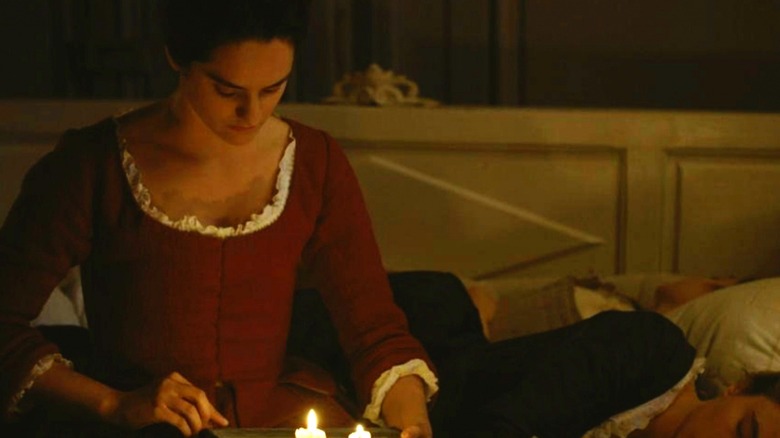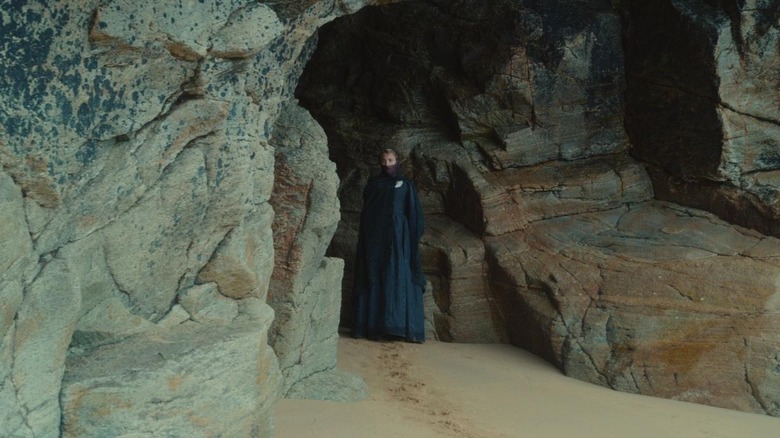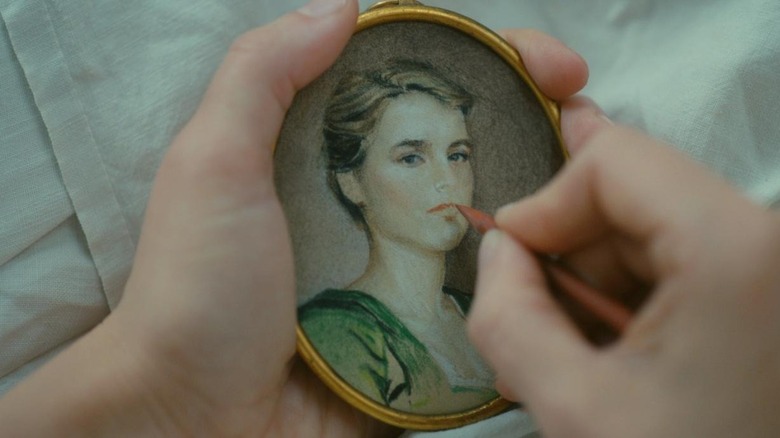How Portrait Of A Lady On Fire Avoided One Of The Biggest Pitfalls Of Making A Period Piece
This year, Celine Sciamma's highly acclaimed "Portrait of a Lady on Fire" will turn four years old. Recently, the film has been inducted into BFI's Sight and Sound's Greatest Movies of All Time at number 30, one of four additions from this past decade to make the list. In a robust and impressive body of work, it stands as the French auteur director's masterpiece, one that shatters the filmic power of the male gaze with a unique irreverence. It's a true feminist epic and focuses on Marianne (Noémie Merlant), an artist commissioned to paint a daughter of Gentry, Héloïse (Adèle Haenel), who is arranged to be married off to a nobleman in a few short weeks. What follows is a tragic tale of hidden displays of yearning, feminine desire.
The movie feels grandiose in nature, but according to the Daily Beast's feature on the film from 2019, Sciamma shot all the exterior shots of "Portrait of a Lady on Fire" in a short 38 days on the island of Brittany. The complex interior shots, which often required low light conditions, were all shot in a remote castle in the Parisian suburbs.
In order to keep a steady pace while shooting the feature, Sciamma admits that despite the period setting, the film would have to be stripped to its bare essentials with focus only on the most significant details. In a period piece, it's easy to get lost in all technicalities and nuances, but with a lower budget and no time to lose, a filmmaker must make sacrifices.
A minimalist, period aesthetic
"We had the time we needed," Celine Sciamma assured the Daily Beast. "There's only 69 scenes, which is half of the scenes of a traditional script. We thought a lot about this, how to not get overwhelmed with the things that are supposed to come with a period piece. You have to compromise and still be able to [execute] our vision."
Never focusing away from the push-and-pull of her protagonists, Sciamma's film is noticeably minimalistic in its production design and costuming, and there's an explicit emphasis on functional design over aesthetics. This creative freedom comes with the subjectivity of fiction and film — sometimes it's okay for emotional truth to be prioritized over accuracy.
Greta Gerwig's 2019 "Little Women" adaptation takes a similar approach. There was less of a budget and time restriction going on in that film's production, but sometimes Gerwig's writing, costuming, and direction felt modernized and out of place. There's a relatable, adolescent authenticity, however, that makes Gerwig's work stand apart from other adaptations. In both films, the story and characters come first above any period limitations or restrictions.
In filmmaking, restrictions are sometimes hidden blessings
Sometimes, restrictions turn into hidden blessings. As a result of the short production time on "Portrait of a Lady on Fire," Noémie Merlant and Adèle Haenel had not previously rehearsed their scenes together until they were properly on set. In some ways, Marianne and Héloïse's bond is just as authentic and spontaneous as Merlant and Haenel's. In the Daily Beast article, Merlant said their connection on set came about "on instinct."
Yes, the blocking and staging of intimate looks were already locked in the film's script, but the little intricacies between the characters were up for the two leads to create on their own. "How you propose to look at her is something you decide, and she looks at me in a way that I don't know, so it's always something that we create together," Merlant explained.
"Portrait of A Lady On Fire" is one of cinema's greatest, most tragic love stories ever told, and it will live on as a crucial moment in modern feminist film, not because it meticulously captures France in 1770, but because it finds something timeless and honest within this tale of yearning.


